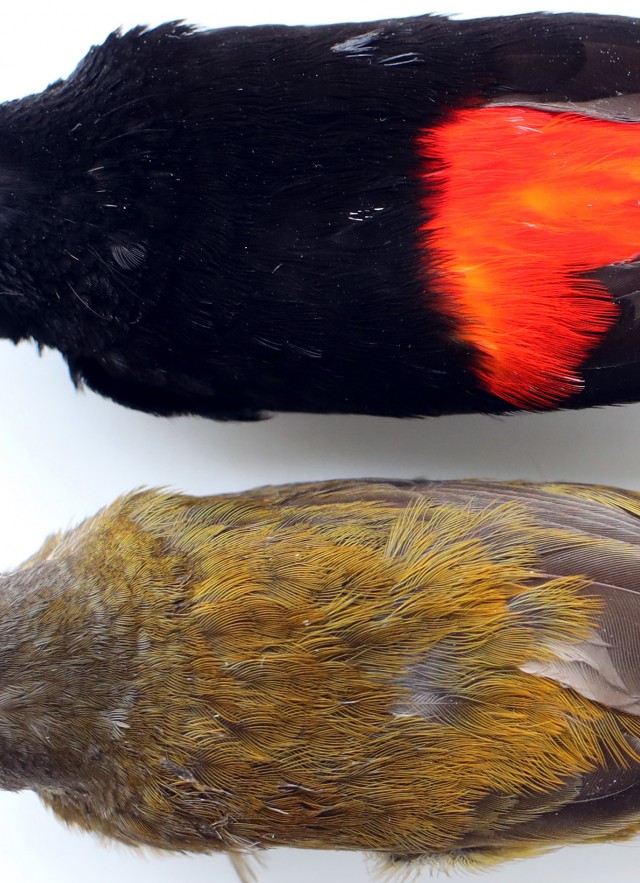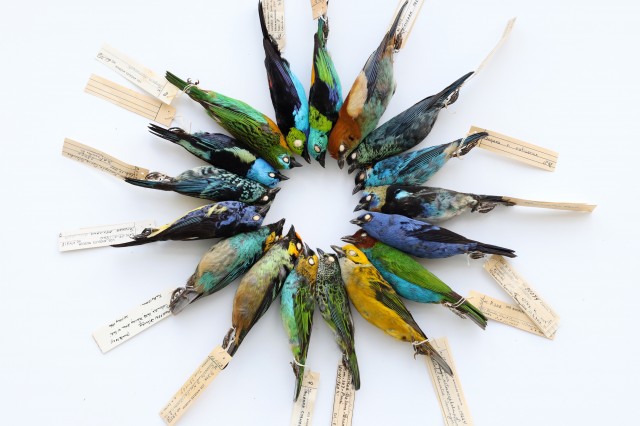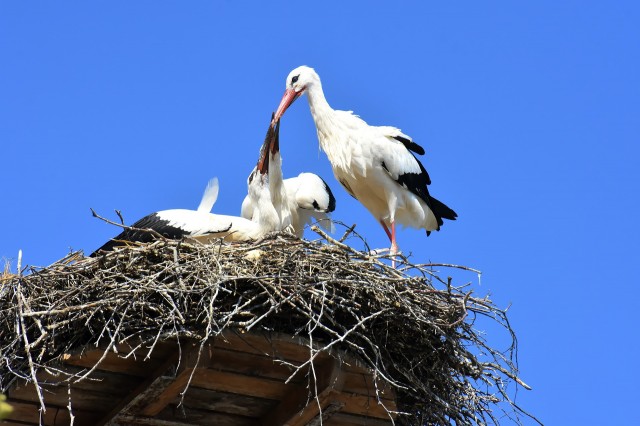The Hart Museum remains closed. Los Angeles County has approved a plan to transfer the William S. Hart Museum and Park from the County to the City of Santa Clarita.
Fake It 'Til You Make It
How tropical tanagers cheat their way to flashier feathers and hopefully more mates

There’s a reason "peahenning" isn’t a thing. In birds, it’s typically up to the males to impress potential mates through incredible displays of color showcasing their fitness. For males of the Ramphocelus genus of tanagers found in Central and South America, it's brightly colored feathers that earn the birds common names like "scarlet-rumped" or "lemon-rumped" and "flame-rumped."
image by Allison Shultz
These rumps aren't supposed to just be good-looking, either. Bird scientists have long theorized that this coloration represents a healthy diet full of foods which make these bright bottoms possible. In a new article in the journal Scientific Reports, NHM’s Assistant Curator of Ornithology Allison Shultz and colleagues reveal that these tropical birds have one weird trick to enhance their vivid color.
The electric yellows, neon oranges, and velvety reds male tanagers (like this crimson-backed tanager) used to attract mates are thought to be made possible by carotenoids, pigments the birds ingest through their (presumably healthy) diets and cannot produce themselves. Their lustrous feathers become nonfungible tokens of health because only healthy cells can turn a colorful fruit into bright red feathers, in theory.
This is what biologists call an ‘honest signal’, a reflection of the bird’s underlying health and ergo fitness for fatherhood. You can see the difference in vibrance between the male specimens on the left and females on the right. Theoretically, brighter bird feathers correlate to more carotenoid pigments and a healthier bird. Here's the thing: when Shultz and her colleagues analyzed the feathers, they found that males and females had similar levels of carotenoids. The secret to male tanagers' luster resided elsewhere: in the microstructure of their feathers.
If levels of carotenoid pigments were roughly equivalent, what mechanism could explain the color contrast? Putting feathers from 20 specimens under powerful microscopes revealed that the brighter male feathers had much more complicated microstructures than their female counterparts. Shultz and her fellow researchers simulated the interplay between these elegant microstructures and light using sophisticated modeling software, discovering the structures’ role in tanagers’ incredible coloration.
An individual feather is made of barbs (think of a stem) and barbules (leaves on that stem – but for feathers) – a feather’s microstructure. Shultz and her coauthors found that microstructures were the source of these birds' dazzling colors. The barbs of these Ramphocelus flammigerus, or flame-rumped tanager, feathers are both wider and more oblong in shape than their female counterparts, producing the shocking oranges and reds that make their rumps so flamey.
Notice the sharp 'v' shape of the barbules? This upward angling is known as a ‘dihedral’ structure. This arrangement produces the super black found in the male Ramphocelus flammigerus whose feathers are pictured here. Less visible is the razor shape of the central barb which along with the tightly packed and structured barbules combine to make feathers that are blacker than black. The microstructure of these feathers reduces reflectance, making them absorb light to appear darker than their female counterparts.
Contrast the super black and neon red that earns Ramphocelus flammigerus the common name "flame-rumped" in the specimen on the left with the velvety red of Ramphocelus carbo, the silver-beaked tanager, specimen to the right. The microstructure accentuates the bright feathers of the flame-rumped tanager, making them even brighter, but variations of that microstructure produce a rich velvety red throat of the silver-beaked tanager.
These dihedral microstructures are versatile, producing different effects with different pigments. Pair them with melanin, and you get super black; pair them with carotenoid pigments, and you get that rich velvet particular to Ramphocelus carbo, the silver-beaked tanager, whose back feathers are pictured here. This points to how much more there is to learn about microstructure, Shultz says: "This is showing that microstructure is at the frontier of our understanding of color, and highlighting how important it is and what the ramifications are of an untapped field."
The implications go beyond bright colors, Shultz says. “We don’t know what else is happening with these. Does having these different feather shapes make it easier for parasites to attack them? Or harder? We don’t see this super black structure around us, just in the tropics. Is there a thermoregulatory reason? ” Super black has evolved in many birds in different locations, possibly playing different roles in things like heat retention as well as attracting mates. Shultz’s research has opened the door to understanding even more about what roles feathers play.

So what other birdy beauxs might be pumping up their luster with clever microstructures? “Microstructure could apply beyond carotenoids too,” Shultz says, but she plans on starting with other colorful birds, and collections like NHM’s make that possible. Kept safely in their shelves away from light and dust, the feathers in ornithology collections are waiting to tell the story of birds and color. “In order to really get at this, you’d need to sample many species across the world, and it would be logistically impossible to do that in the field. In museum collections, we already have the samples, with over half of bird species in our collection alone.”

